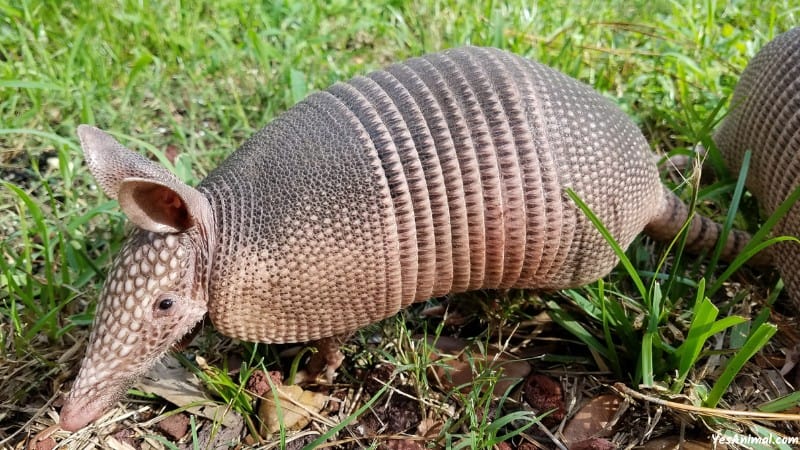Last Updated on March 8, 2024 by Amin Tawar
Are There Armadillo In United States?

Yes, there are Armadillo in United States. The nine-banded armadillo is a mammal that can be seen very commonly in the US. Its ancestors were found in South America and stayed there until the appearance of the Isthmus of Panama which let them enter North America.
They are very solitary and mainly nocturnal animals that are found in different habitats, from secondary rainforests to dry scrub and grassland. The primary reason for this quick expansion is defined only by the species having few wild predators in the US.
Where Do Armadillos Live In The United States?
Several studies and the Officials of the wildlife department have stated that armadillos, prefer to live in hot weather, and can thrive even in Pennsylvania and New Jersey, which is assisted in regions by warmer winters.
This is because the temperature in the northeastern regions of the U.S. has increased by two degrees Fahrenheit from 1895 to 2011, and could go up by almost 10 degrees Fahrenheit by 2050. With warmer temperatures being seen further in the northern regions, armadillos can be potentially seen in areas that were completely surprising in the nest 20 years ago.
How Did Armadillos Get To The United States?
There is no clear answer to this. But it is certain that these animals have been moving steadily northeast in the past few decades, by crossing the Rio Grande River from Mexico in the 19th century, and was later introduced into Florida around the same time by humans.
By the year 1995, the species become well established in the southern state as it crossed the Mississippi River. In the late 1990s, they reached Tennessee, then the state of North Carolina, and now they can be found even in Virginia.
How Many Armadillos Are In the United States?

The exact population of the species is not predictable, but the nine-banded armadillo is very common in the US and can be easily spotted in the country. They have also been rapidly expanding their range in the east and north of the United States.
The habitat expansion of these species is predicted to continue until they reach as far as the northern states. Further, the westward and northward expansion might be restricted as these species have very less tolerance for winters.
Are Armadillos Friendly To Humans?
Armadillos are not aggressive towards humans, they very rarely attack pets or humans, when they possibly feel threatened. However, this does not mean you can grab one. Unlike other wild animals, you must pay attention when being around armadillos. Though they do not bite, they are a threat to humans as can transmit disease when handled or touched.
Can We Eat Armadillo In the United States?
In many regions of South and Central America, armadillo meat was eaten during the Depression. But these days there is only a very little desire for Americans to eat or hunt armadillo in the US. however, when trying to eat armadillos, you must make sure the meat is completely cooked as they can spread leprosy to humans.
Can You Buy Armadillo In the United States?
Armadillos must not be domesticated like dogs or cats as they are wild animals that need plenty of space to move about. Additionally, they carry transferrable diseases that can spread to humans and pets. Also, they are considered a nuisance species as they destroy properties by digging up gardens, lawns, and flower beds.
Their tunneling beneath driveways, foundations, and other establishments can cause serious damage to your property. An armadillo can raise potential health problems when you have children or small pets. Thus they must not be owned as a pet.
Armadillo Population In United States By State
Read about Armadillos In the States Of U.S
- Armadillo In Alabama
- Armadillo In Florida
- Armadillo In Georgia
- Armadillo In Illinois
- Armadillo In Indiana
- Armadillo In Kentucky
- Armadillo In Missouri
- Armadillo In South Carolina
- Armadillo In Tennessee
- Armadillo In Texas
Conclusion
And that was everything you need to know about the Armadillo in the United States. I hope this article answered all your queries.
Thank You For Reading!
Our Source For This Guide
